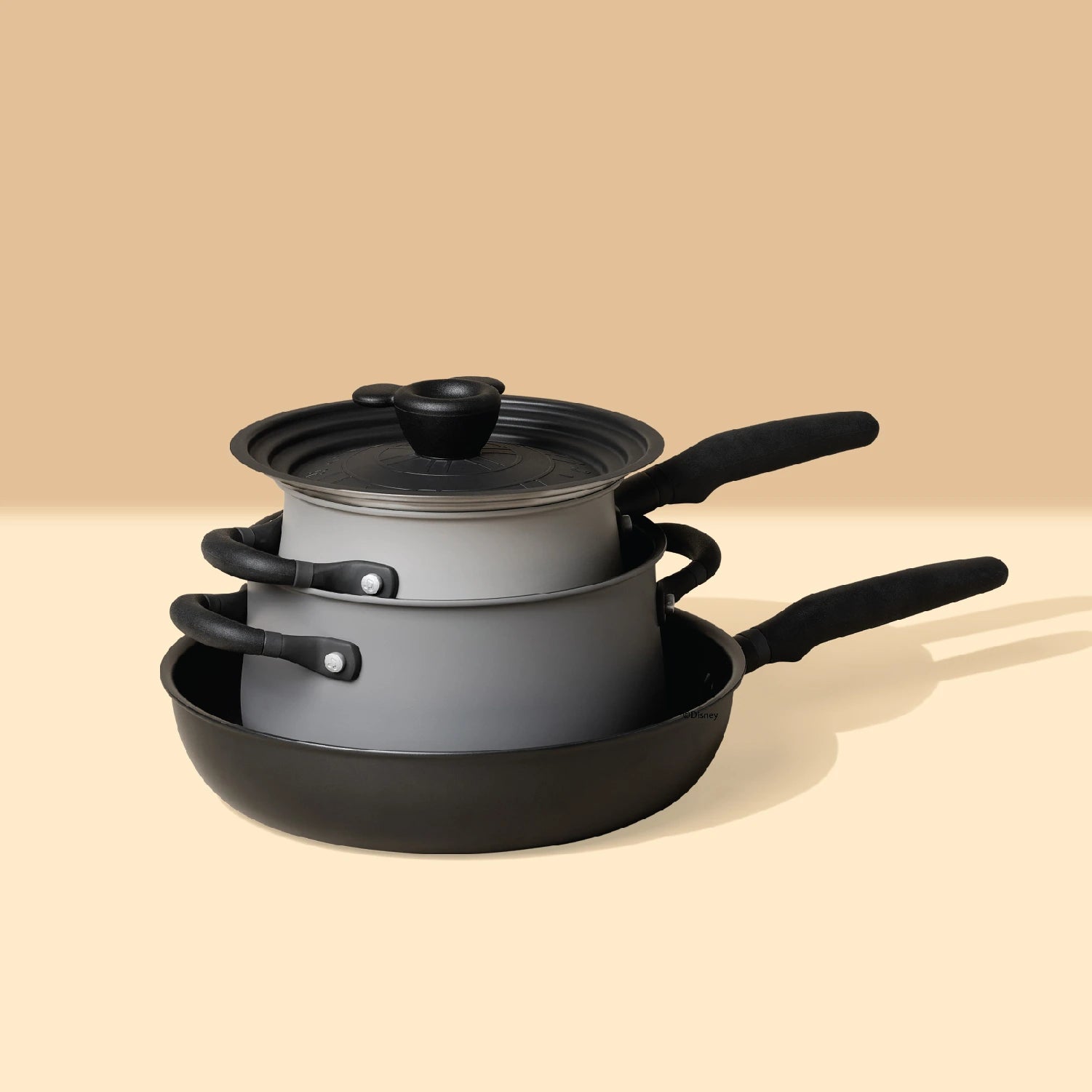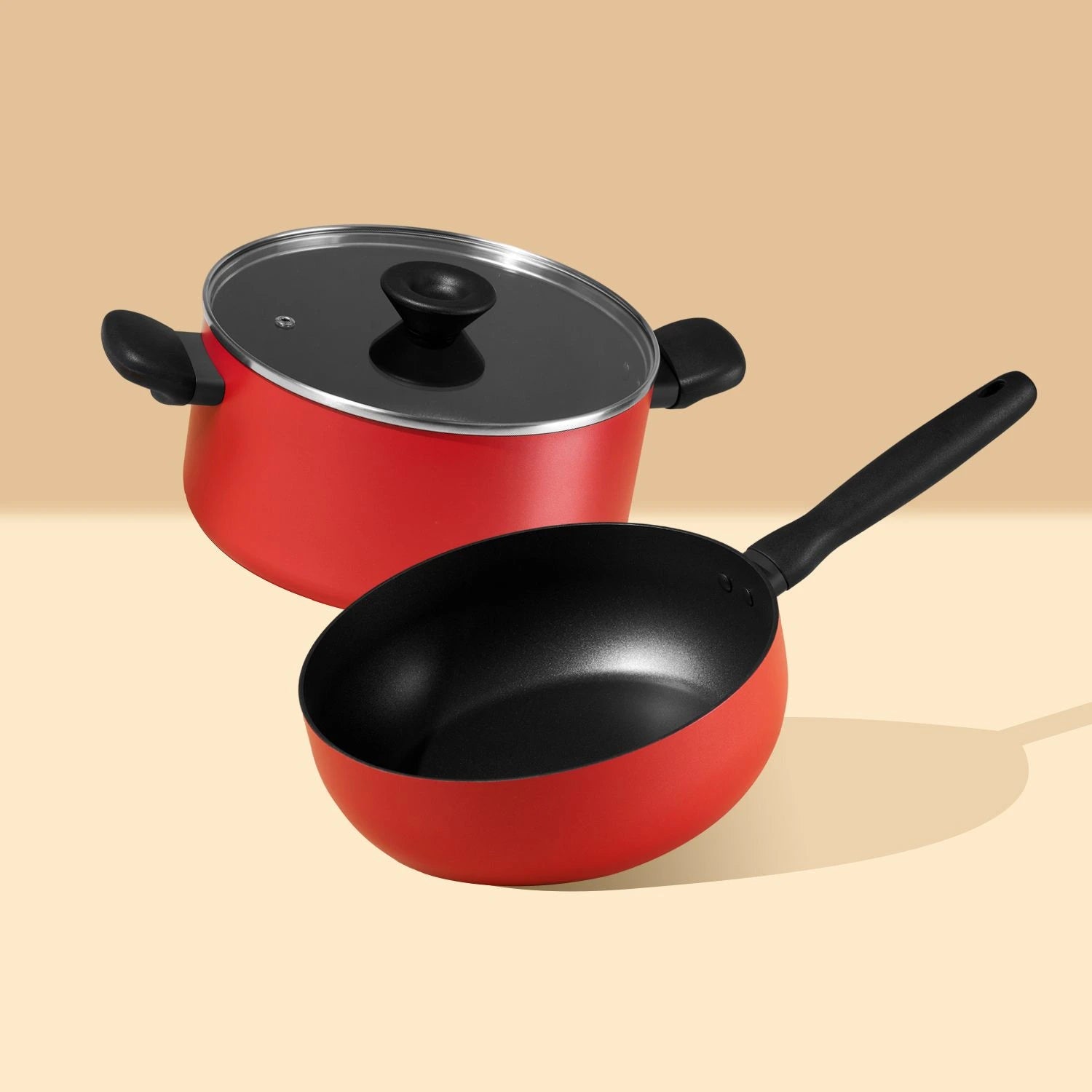Nonstick cookware fosters healthier eating habits by facilitating cooking methods that require less oil, encouraging the use of wholesome ingredients, and simplifying the cooking process. With its smooth surfaces, nonstick pans allow for minimal oil usage, reducing unnecessary fat intake while preserving the natural flavors of foods. This promotes the consumption of nutrient-rich ingredients like vegetables, lean proteins, and whole grains. Additionally, the ease of cleaning nonstick cookware makes home cooking more accessible, encouraging individuals to prepare meals from scratch rather than resorting to processed options. By promoting healthier cooking practices and simplifying meal preparation, nonstick cookware contributes to the development of sustainable and nutritious eating habits.
Table of Contents
What Are Healthy Eating Habits?
Healthy eating habits refer to patterns of food consumption that support overall well-being and contribute to optimal health. Some key components of healthy eating habits include:
- Balanced Diet: Consuming a variety of nutrient-dense foods from all food groups, including fruits, vegetables, whole grains, lean proteins, and healthy fats, to ensure adequate intake of essential nutrients.
- Portion Control: Being mindful of portion sizes to prevent overeating and maintain a healthy weight.
- Limiting Processed Foods: Minimizing the consumption of processed and refined foods high in added sugars, sodium, and unhealthy fats, which can contribute to chronic health conditions.
- Drinking Plenty of Water: Staying hydrated by drinking an adequate amount of water throughout the day to support bodily functions and prevent dehydration.
- Regular Meals and Snacks: Eating regular, balanced meals and snacks to maintain steady energy levels and prevent excessive hunger, which can lead to unhealthy food choices.
- Mindful Eating: Paying attention to hunger and fullness cues, eating slowly, and savoring food to enhance satisfaction and prevent overeating.
- Cooking at Home: Preparing meals at home using fresh, whole ingredients whenever possible to have more control over ingredients and cooking methods.
- Limiting Added Sugars and Salt: Reducing intake of foods and beverages high in added sugars and sodium to promote heart health and overall well-being.
- Including Fiber-Rich Foods: Incorporating fiber-rich foods such as fruits, vegetables, whole grains, legumes, and nuts into meals to support digestive health and promote satiety.
- Moderation and Variety: Enjoying a wide range of foods in moderation, avoiding extremes, and embracing variety to ensure a well-rounded and enjoyable diet.
Benefits of Healthy Eating:
Healthy eating habits refer to patterns of food consumption that support overall well-being and contribute to optimal health. Some key components of healthy eating habits include:
- Balanced Diet: Consuming a variety of nutrient-dense foods from all food groups, including fruits, vegetables, whole grains, lean proteins, and healthy fats, to ensure adequate intake of essential nutrients.
- Portion Control: Being mindful of portion sizes to prevent overeating and maintain a healthy weight.
- Limiting Processed Foods: Minimizing the consumption of processed and refined foods high in added sugars, sodium, and unhealthy fats, which can contribute to chronic health conditions.
- Drinking Plenty of Water: Staying hydrated by drinking an adequate amount of water throughout the day to support bodily functions and prevent dehydration.
- Regular Meals and Snacks: Eating regular, balanced meals and snacks to maintain steady energy levels and prevent excessive hunger, which can lead to unhealthy food choices.
- Mindful Eating: Paying attention to hunger and fullness cues, eating slowly, and savoring food to enhance satisfaction and prevent overeating.
- Cooking at Home: Preparing meals at home using fresh, whole ingredients whenever possible to have more control over ingredients and cooking methods.
- Limiting Added Sugars and Salt: Reducing intake of foods and beverages high in added sugars and sodium to promote heart health and overall well-being.
- Including Fiber-Rich Foods: Incorporating fiber-rich foods such as fruits, vegetables, whole grains, legumes, and nuts into meals to support digestive health and promote satiety.
- Moderation and Variety: Enjoying a wide range of foods in moderation, avoiding extremes, and embracing variety to ensure a well-rounded and enjoyable diet.
How Can Healthy Non-Stick Cookware Be A Part Of Healthy Eating Habits?
Nonstick cookware can be a valuable part of healthy eating habits in several ways:
- Reduced Oil Usage: Nonstick surfaces require less oil or fat for cooking compared to traditional cookware, promoting lower calorie intake and healthier eating habits. This can be particularly beneficial for those looking to reduce their fat consumption or manage their weight.
- Healthier Cooking Methods: Nonstick cookware allows for cooking methods that require minimal oil, such as sautéing, stir-frying, and searing, without compromising on taste or texture. These cooking methods help preserve the natural flavors and nutrients of ingredients, resulting in healthier and more nutritious meals.
- Easy Clean-Up: Nonstick surfaces are easy to clean and require less scrubbing and soaking compared to other types of cookware. This encourages regular cooking at home, as it eliminates the hassle of cleaning up after meals, making it more convenient to prepare healthy homemade dishes.
- Versatility: Nonstick cookware comes in a variety of types and sizes, including skillets, saucepans, and baking sheets, offering versatility in meal preparation. With nonstick cookware, you can easily cook a wide range of dishes, from stir-fries and omelets to baked goods, making it easier to incorporate diverse and nutritious foods into your diet.
- Reduced Risk of Food Contamination: Nonstick surfaces are smooth and easy to clean, making them less likely to harbor harmful bacteria or contaminants that can lead to foodborne illnesses. By using nonstick cookware properly and maintaining good hygiene practices, you can reduce the risk of food contamination and promote food safety in your kit











Leave a comment